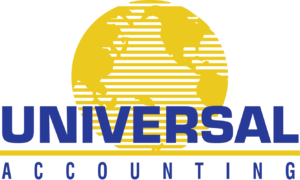
Accounting Software
Steven Cohen, managing director of Softline Pastel, says, “Yet, however intimidating this task may seem, automated accounting software applications have made the ordeal simpler, if a systematic method is followed. In addition, accounting software vendors are keenly aware of the stresses of Year End processing and accommodate clients by allowing them to proceed with the new financial year, while backdating audited financial adjustments on the previous year.”
With QuickBooks, the leading accounting software for small business, setting a closing-date will help with Year End accounting. QuickBooks also includes a Year-End Checklist to walk you through keys tasks. You can access this feature by clicking “help” and then choosing “Year-End Guide.”
Year-End Accounting Checklist
Sometimes it helps to have a checklist to follow in order to complete crucial Year-End Tasks. Here are a few things to ask yourself when doing your Year End financial statements.
- Does my general ledger bank balance reconcile to the bank statement?
- Are there any accounts receivables that are worthless and should be written off?
- Is my balance in Allowance for Bad Debts a reasonable estimate of potential write-offs?
- Is the company’s inventory balance correctly stated?
- Are there inventory items that cost more than they’re worth and should be written down to their market value?
- Does the company still have all the fixed assets?
- Is my depreciation correctly recorded for those fixed assets still in the company’s possession?
- Did I amortize goodwill and franchise fees?
- Are there any prepaid items that need to be adjusted such as prepaid insurance?
- Have all assets been reviewed for accuracy?
- Have we recorded all of our payables?
- Do the payroll tax liabilities coincide with our quarterly reports?
- Do the balances in the notes payable accounts (loans) agree with what the banks say we owe?
- Are there other debts that have not been included on the books?
- Are there debts on the books that no longer exist because of forgiveness or oversight?
Finally, the last step of the year-end process is to check your Sales, Cost, and Expense accounts. Compare them to prior years to see if any increase or decrease is reasonable. If you run across some significant changes, you may want to look at the general ledger for that account to ensure the entries are legitimate.
As you follow this year-end process you will be amazed at how much you learn. You’ll see trends and practices that will help you in consulting with the client and help him/her run their business more effectively.
Meeting with Client
Once you have completed this list, and before putting the books away for the year, make sure you run the financial statements by the owner/manager to identify anything you might not be aware of.
The best way to do this is to arrange a meeting where you can show them the completed financial statements and review the balances of each account, including the subsidiary ledger balances.
Throughout the review ask the question, “Do these balances seem reasonable?” At the end of the meeting ask, “Are there any other assets or liabilities that I haven’t included?” Occasionally, they might surprise you with an event that you didn’t have any knowledge of before, but that will affect your books.
In fact, often times the accountant will know more about the business finances than the owner. That’s why so many Universally trained accountants diversify into new businesses because they see opportunities going untapped.
Backup Year-End Data
Be sure to backup all current data before performing beginning your Year End financial reports. It’s also a good idea to print all financial reports prior to your Year End calculations.Once you complete Year End financial reports, backup that information as well.Label your files clearly to avoid confusion of the different files.
Universal Training Can Help with Year End and Other Accounting Functions
Universal’s Professional Bookkeeper Program can help you perform valuable accounting tasks for the small business. Whether you’re looking to improve your current accounting and bookkeeping business or whether you’re looking to start your own accounting firm, the PB Program is guaranteed to help! Don’t wait another day to advance your career. Visit Universal Accounting Center today!
Share this post: on Twitter on Facebook on Google+




